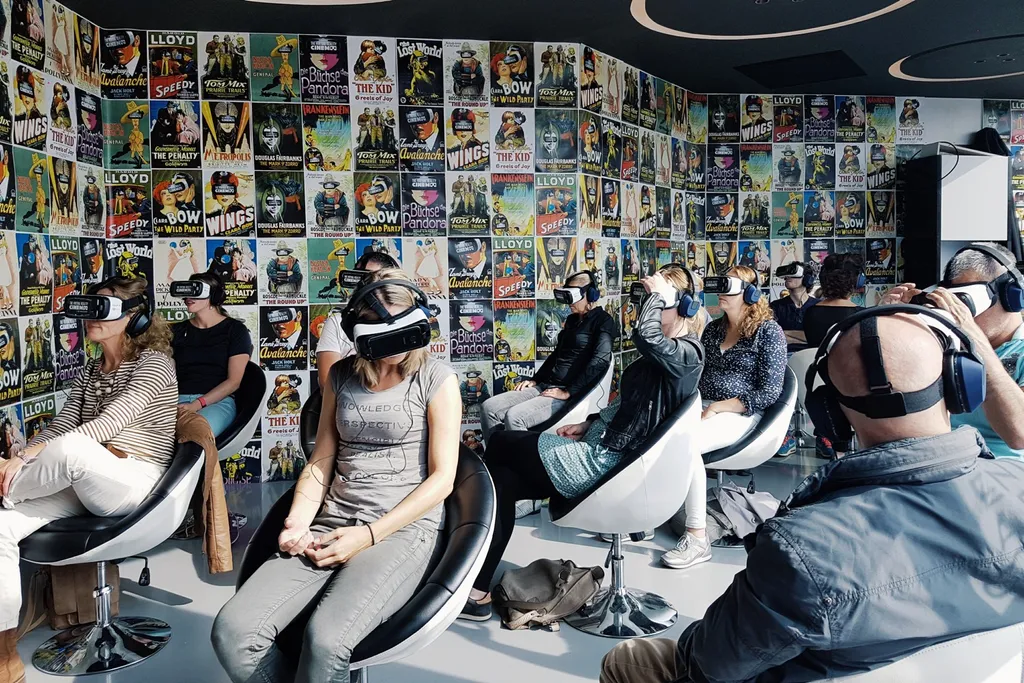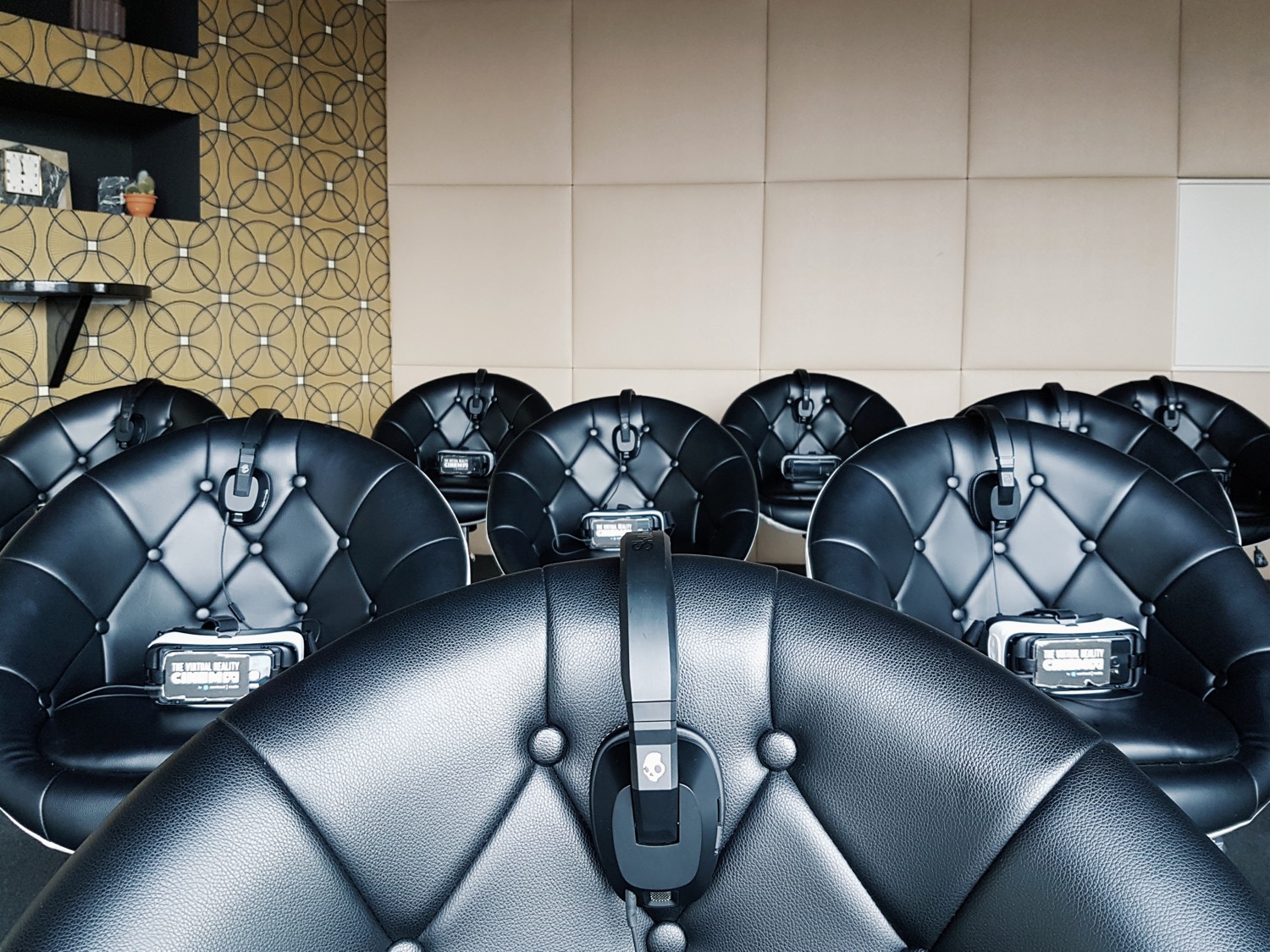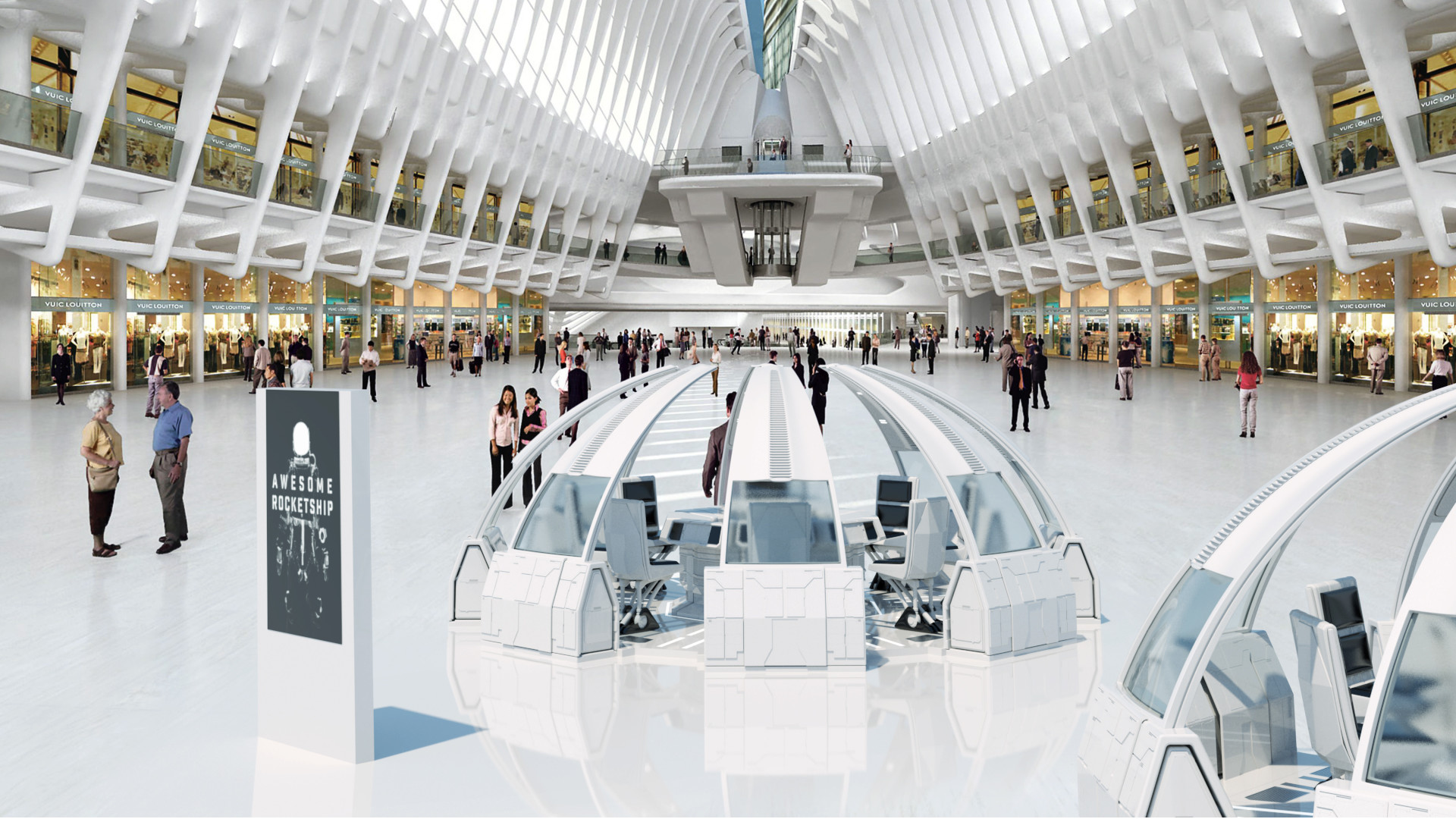Interest in VR cinema and VR movie theaters has surged, but relatively few VR movie theaters have actually been launched. One of the pioneers in bringing VR movies to theaters is Amsterdam-based Samhoud Media. The company opened a permanent VR theater in Amsterdam this March called “The VR Cinema,” which has drawn “over 50,000 visitors” since its launch,” according to Jip Samhoud, the company’s founder. The theater has generated “great audience excitement” about VR , which he attributes to the fact that most of them have had “their first VR experience” at the theater. In fact, one of the primary benefits of VR theaters is that they make VR accessible to “everybody,” eliminating the need for consumers to purchase expensive hardware, notes Samhoud.
The theater has attracted a very diverse audience, including “grandparents with children and couples,” reports Samhoud. The “average age of patrons at the theater is 35-40.”
The theater refreshes its films once a month, and offers diverse content packages, including horror films, animations, and documentaries. According to Samhoud, horror films are the most popular films at the theater, followed by animations. Interestingly, documentaries at the theater have generated “many repeat visits,” he reports. Shows at the theater run 30 minutes long, and typically include two or three films. Audiences are charged 12.50 euros (approximately $15) per show. In Samhoud’s view, this price is “comparable to prices for traditional films.”
Pop-up theaters are playing a key role in acclimating consumers to VR films and VR in general. They’ve certainly been a linchpin in Samhoud’s VR theater strategy. The company opened its first pop-up theater in Amsterdam last October, and ran VR films in a Berlin pop-up theater from March to May this year. The company also ran VR films in a pop-up theater in Copenhagen in June.
He acknowledges that the shortage of quality VR content remains one of the key stumbling blocks to the growth of VR theaters. He expects VR theaters to become prevalent in “all big cities” in the next 3-5 years. He acknowledges that “finding the right content” for VR theaters is a “major challenge.” At the moment, he feels the films shown at this theater are “fine,” but he concedes that in two or three years, “better content will be needed” to continue attracting audiences.
Samhoud underlines the need for producers to gain a better grasp of the special attributes and qualities of VR, and for an increasing supply of “VR-exclusive content.” At the same time, Samhoud believes that the coming expansion of VR theaters will help spur increased production of VR content. Increasingly, film producers are gravitating toward VR, as it represents “a new storytelling medium,” he notes.
Samhoud Media plans to expand its theaters to such locations as London and Oslo and has received significant interest from organizations seeking to partner with the company or franchise their theaters in such locations as China and Lebanon.
Ed Lantz, President and CTO of Vortex Immersion Media, a developer of 4D immersive theaters, sees great potential for immersive cinema, and highlights the greater involvement of Hollywood producers in this market. One of the key stumbling blocks to the development of immersive cinema and VR theaters, in his view, is the “insufficient number of screens” for showing such films. The paucity of screens and quality content has depressed investment in VR theaters and immersive cinema, says Lantz. Vortex Immersion has resolved this “chicken and egg” problem by “operating its own immersive venues and producing content for those venues,” he notes. He believes “pop-up domes” will help alleviate the shortage of screens for VR and effectively “prime the pump” for VR’s diffusion in theaters.
Lantz envisions major opportunities for “cinema shows and live events, including sports events, arts performances allowing audiences to interact with the performers, and dance parties,” in VR theaters. As he observes, such content as education and travel already is already well entrenched in immersive theaters in museums, amusement parks, and other venues.
He underlines the need to train producers in “a new cinematic language” afforded by VR. Lantz expects companies such as his will play a leading role in “aggregating quality content” for VR theaters. He’s bullish on major expansion in VR theaters in the near future, projecting the launch of “150-300 VR theaters in the next 5 years, primarily using pop-up technology.”
He says “VR content will need to be produced at a higher resolution for VR theaters- at 8K equirectangular frames or greater. While “head-mounted displays are demanding very high frame rates, frame rates aren’t an issue in immersive theaters because head tracking isn’t required.” He calls attention to the more “pronounced vertigo effects” caused by headsets for VR films, and admonishes producers of such VR films to “respect their audiences’ nervous system.” In particular, he advises them to take special care with “film cuts and POV movements” they employ.
Lantz believes “exhibition opportunities for VR will be huge,” and out-of-home VR in general will figure prominently in “exposing consumers to VR,” and complement home VR.
According to Rob Lister, Chief Development Officer for the IMAX Corporation, the company’s “location-based VR initiative will involve multiplexes as well other types of venues, such as retail destinations. For movie content, we envision offering highly interactive experiences with narratives, as opposed to shorter trailers or marketing pieces. We are still working out the pricing dynamics for these experiences, but we estimate the pilot will utilize approximately 5-10 minutes of content and a $7-10 price point.” IMAX’s first VR center is due to be first introduced.
Lister reports IMAX “is looking into several types of high-quality VR content, from experiences that are complementary to blockbusters concurrently playing at IMAX theatres to stand-alone immersive video content and gaming. Just to give you an example of the first idea, picture seeing the next Star Wars movie in IMAX and afterwards flying the Millennium Falcon in VR.”
VR movie theaters offer ideal opportunities for consumers to sample VR experiences without paying for high-cost consumer head-mounted displays. As Lister notes, “IMAX’s location-based strategy will allow audiences around the world to experience the highest quality VR experiences for the first time at a much lower price.”
More immersive and panoramic headsets will become increasingly key to VR theaters. In this regard, IMAX is utilizing a VR headset that “provides an IMAX-like 210-degree full peripheral field of view- nearly double that of any other VR headset available.”
Clearly, VR theaters will not truly resemble traditional movie theaters. As Lister points out, “IMAX’s technical and design teams are in the process of creating spaces that are specifically for VR,” which won’t have typical movie theater features, “such as stadium seating.”
Although “building a library of content always takes some time, once VR content creators have a clearer path to monetization, they’ll be more inclined to ramp up their efforts,” points out Lister.
Efforts are underway to help accelerate the creation of higher quality VR films. For example, through a partnership with Google, IMAX is developing a cinema-grade VR camera to help content developers, including our key filmmaking partners, to create higher-quality VR content,” says Lister.
Distribution has emerged as a major challenge for VR cinema, as Jim Stewartson, CEO of Awesome Rocketship, notes. His company has developed a distribution platform called the VenueVR Gateway. The platform, which will utilize head-mounted displays from various manufacturers, is due to be rolled out more widely later this year.
Stewartson doesn’t anticipate the emergence of VR-only theaters in the forseeable future- rather he anticipates that “portions of movie theaters may be converted to VR further down the line.”
Stewartson believes his company’s platform will help “expose more people to quality VR, and increase the oxygen in the entire VR ecosystem,” extending to mobile VR and in-home VR.
Awesome Rocketship’s platform has also been aimed at promoting more social experiences in VR- the platform enables 8 people to have an experience together in a virtual reality world,” says Stewartson. For example, “they could visit together a Star Wars VR world,” he explains.





























